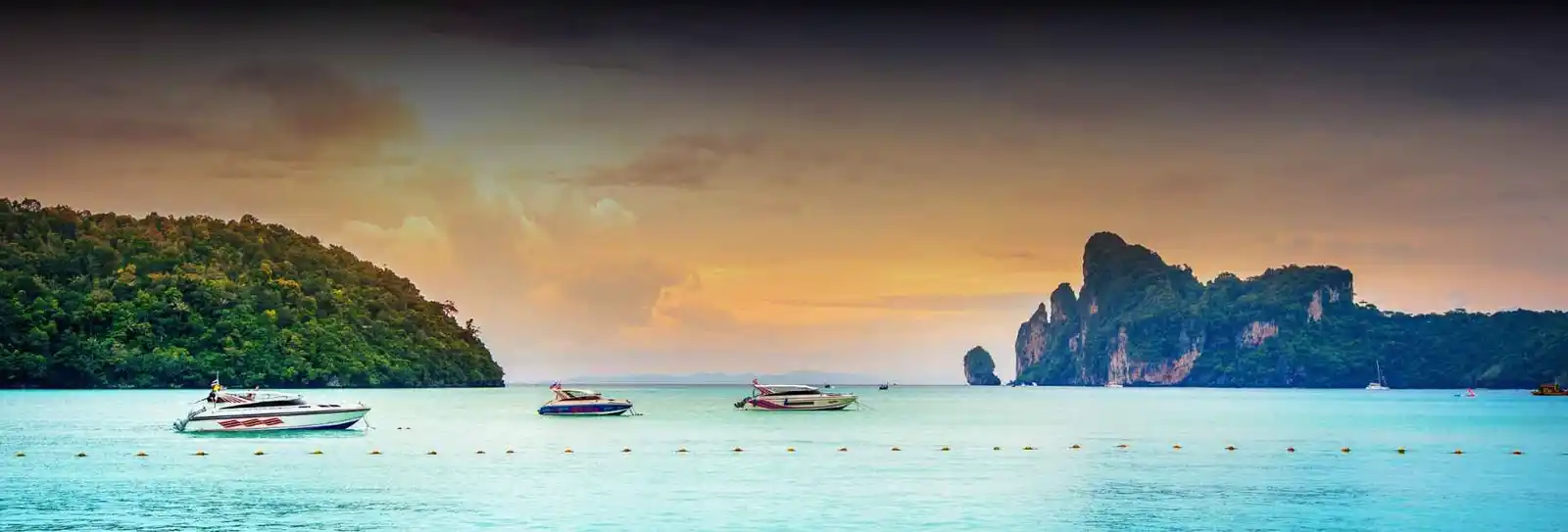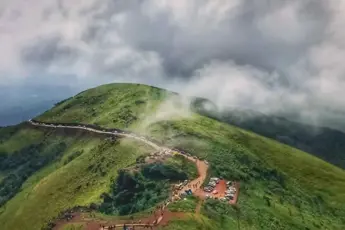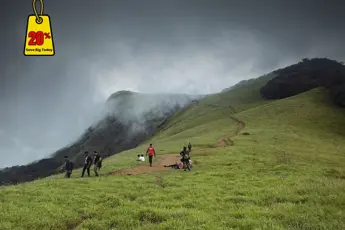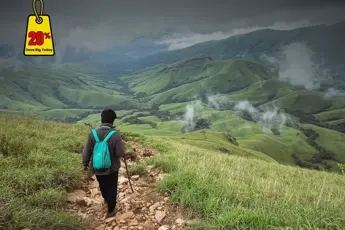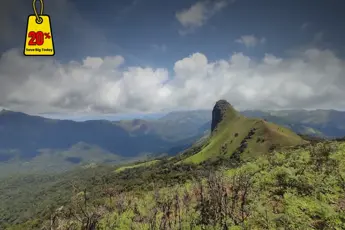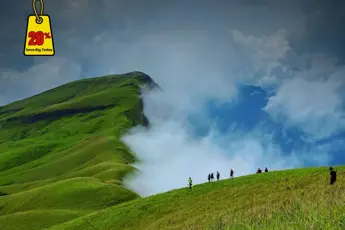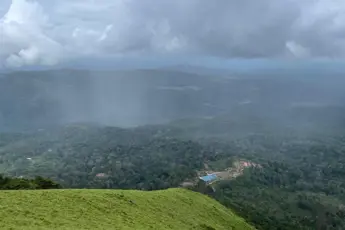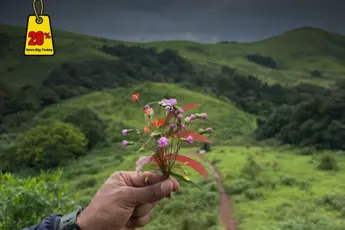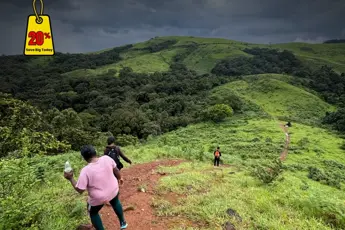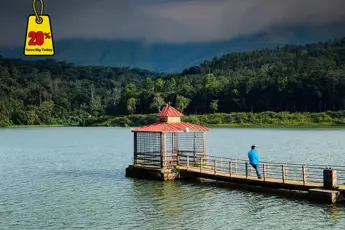
1. Netravati TrekPeninsular India's longest west-draining river and the lifeline of Karnataka state's Dakshina Kannada district is the Netravati River. The Netravati starts in the forested Western Ghats near Kudremukh at Bangrabalige in Chikkamagaluru district and stretches for a long distance of approximately 103 kilometres until it finally joins the Arabian Sea at Mangalore. Netravati River is an important contributor to the sustenance of the region's agriculture, drinking water supply, fishery, and land transport. It has many tributaries like Kumaradhara River along its course, and thus enhances its outflow and variety. The river is an eco-system rich, and there is dense greenery, thus constituting an invaluable component of regional natural heritage. Besides its natural importance, Netravati also has cultural and religious importance. It has several temples and shrines on its banks, and even the river is referred to in mythological and legendary tales as divine.Its twin towns of Dharmasthala and Bantwal prosper with water being their first-hand reliance for religious and physical needs. River rafting, kayaking, and treks in nature also provide space for adventure tourism, which is a tourist attraction throughout the year. While essential, the Netravati River has been threatened by sand mining, pollution, and rumoured dam and diversion proposals. Locals and activists have been demanding its safeguard, looking for a balance of development and sustainability. The suggested Netravati River Diversion Project, in reality, has also thrown up concerns of environmental degradation as much as water rights. In theory, Netravati River is not only a geographical feature it is a badge of people of coastal Karnataka, representing life, livelihood, and legacy that must be preserved and well-planned so that it continues to thrive generation after generation.What is so Unique about NetravatiVirgin Cover: The path traverses through the virgin cover of the Kudremukh National Park, exposing the trekkers to having chances to observe rich green cover, rolling pastures, and flora and fauna. Heavy cover and foggy weather contribute a virtual mystical feel during monsoon and post-monsoon times.Panoramic Scenic Views: Netravati Peak Climbers of Peaks are privileged to have beautiful panoramic scenic views of the valleys, rolling hills, and surrounding peaks like Kudremukh and Ballarayanadurga. Watching clouds move across the ridges of mountains is particularly unforgettable and picturesque.Testing but Rewarding Ground: The trek encompasses gentle slopes, strenuous climbs, river crossings, and jungle tracks that test but reward seasoned trekkers and sturdy first-timers looking to try something a little tougher.Great Biodiversity: Being located inside a conserved national park, the trek comprises high wildlife density. Deer, Malabar giant squirrels, threatened birds, and several species of plants and butterflies come into sight.Peace and Solitude: Contrary to most of the more famous treks in Karnataka, the Netravati Peak Trek is comparatively less crowded, allowing one to have solitude and seclusion to intensely connect with nature.Cultural and Environmental Significance: Trekkers here provide value for the ecological significance of the Western Ghats and its contribution to livelihood and heritage at the local level, offering more chances for conservation.Places to visit around Netravati PeakKudremukh National Park: Netravati Peak is just a few kilometres away from the Kudremukh National Park, which is amongst the most biodiverse regions of the Western Ghats. The park is a nature lover’s paradise and a wildlife photographer's haven thanks to grassland meadows, dense forests, and wildlife. And it's graced with the state's third-highest peak, popular Kudremukh Peak.Kalasa: Kalasa is a scenic temple town situated on the Bhadra River. It's famous for the ancient Kalaseshwara Temple of Lord Shiva and a mix of nature and spirituality. It's worth visiting for heritage, architecture, and peaceful ambience.Hornadu: Approximately 20 km from Netravati Peak is the village of Hornadu with the temple of Annapoorneshwari, where free lunch is provided to all as a temple tradition. Nestled among coffee plantations and undulating hills, it is a picturesque as well as a religious place.Sringeri: Around 60 km from the foot of the Netravati trek is Sringeri, a holy pilgrim town and site of Adi Shankaracharya's first matha. Sharada Peetham and the ancient temples of the River Tunga riverbanks are not to be overlooked by history buffs and seekers of the divine.Samse and Mullodi: These are the basic base villages of Netravati Peak and Kudremukh treks. These villages are remote and give a glimpse of Malnad village life, and are best for relaxing before or after a trek. Full of streams, plantations, and hills, they give a peaceful rural retreat.Best Time to Visit NetravatiOctober to February (Ideal Season): Monsoon rain fills the forests, and hill stations are picturesque with beautiful scenery. It is the safest and most comfortable month to trek in a year, with minimal leech activity and dry trails.June to September (Monsoon Season): It receives heavy rainfall, and hence, the trail is slippery and dangerous. But the scenery becomes supersuave, and there are functional waterfalls. Trekking is possible only by experts, and that too with appropriate equipment and guides.March to May (Summer): The sun dries the road, and the ride becomes tiring. It is bearable in the morning, but blistering sun in the day. It's the worst with hot weather and a dry landscape.How to Reach Netravati PeakBy Airport: Nearest Airport: Mangalore International Airport (approximately 110 km from there). You can drive or taxi from the airport to Kalasa or Kudremukh.By Train: Mangalore Junction (MAJN) or Udupi Railway Station. Both bases are easily reachable from cities such as Bangalore, Mumbai, and Kochi. Transport via road from the station to the trek base via Kalasa.By Road: By bus or car via Hassan – Belur – Kalasa road. Takes a travelling time of about 7–8 hours. Overnight, KSRTC and private buses also operate from Bangalore to Kalasa. By bus or car via Moodbidri – Karkala – Kalasa road. Covers a travelling time of about 3–4 hours.2. Kudremukh TrekLiterally "horse face" in Kannada, Kudremukh is a picturesque hill range and small hill station in the Chikkamagaluru district of Karnataka. It is so called because one of its peaks has a horse-like face. It is situated within the Western Ghats and within the Kudremukh National Park, which is one of India's richest biologically and ecologically complex sanctuary reserves. Standing at an inspiring 1,894 meters (6,214 feet) above, the Kudremukh Peak is the third highest in the state and one of its most valued trekking destinations. With its undulating emerald hills, grasslands, shola grasslands, and valley fogs, Kudremukh is a serene haven in nature. It is one of the high-biodiversity areas with a combination of endemic and sensitive species such as the lion-tailed macaque, Malabar civet, and several species of birds, butterflies, and orchids. It is here that streams originate as major rivers such as the Bhadra and Netravati, and the area is a crucial watershed region.Besides the natural beauty, Kudremukh also possesses a multi-dimensional history. It was its iron ore mining days of fame when it belonged to the Kudremukh Iron Ore Company Limited (KIOCL). But due to conservation and environmental concerns, the mines remained closed in the initial 2000s and gave the area a chance to recover and turn into a conserved eco-tourism destination. And now, Kudremukh is drawing ecotourists, trekkers, wildlife trekkers, and nature lovers galore from each nook and corner of the country. With its green pastures, pleasant weather, and unpolluted wildlife, it takes us through how conservation and ecotourism blend as a fine mixture. From climbing to the crest of the Kudremukh Peak, to trekking along the waterfalls, to simply just admiring the spaciousness, Kudremukh provides a peaceful return to the heart of the Western Ghats.What is so Unique about Kudremukh TrekPeak with a Unique Personality: Kudremukh is "horse face," and the peak appears to be a horse face from afar a unique personality. The rock outcropping is an eyesore but adds some personality to the trek, and it makes the trek special and memorable.Panoramic Rolling Grasslands and Shola Forests: The climb goes through a mix of grasslands and rainforests. The rolling greens of sun and cloud for companionship are a dreamer's paradise. The Shola forests are bi-diverse and provide natural camouflage and a peeking glimpse into fauna.Panoramic Views that Leave One Breathless: As you climb to the top, you are gifted with breathtaking 360-degree views of the Western Ghats. On a clear day, tiered hill ranges stretch far and wide in the distance on the horizon, and clouds drift below your feet, offering you an ethereal, magical experience.Abundant Biodiversity: Kudremukh lies within a national park in the Western Ghats, which is a UNESCO World Heritage Site. There are several endemic as well as endangered species in the region, and hence, the trek is a heaven for nature and wildlife enthusiasts.River Crossings and Waterfalls: The trek involves some crossings of streams, which provide a great, adventurous flavour to the trek. Monsoon and post-monsoon month runoffs and mini waterfalls also add to the experience and perspective.Moderate Difficulty: Most Trekkers Will Find This Trek Easy. The hike is roughly 9–10 km one way and is a moderate hike, hence ideal for first-timers with excellent body fitness as well as old timers who want a good trek.Places to visit around KudremukhKalasa: Temple town and 20 km from Kudremukh, Kalasa follows the course of the Bhadra River. Famous for the Kalaseshwar Temple of Lord Shiva. Peaceful spiritual retreat and good stopover for walks around, within coffee plantations and forests.Hornadu: Just 25 km from Kudremukh, Hornadu is renowned for the Annapoorneshwari Temple, which pilgrims visit all year round. The temple campus is surrounded by paddy fields and hills and is renowned for offering free food to everyone. It's one of the best destinations for temple hospitality enthusiasts and spiritual seekers.Sringeri: About 50 km from Kudremukh is the medieval town of Sringeri along the Tunga River. It boasts the Sharada Peetham, which is one of the four major mathas established by Adi Shankaracharya. Sringeri has historical and cultural importance and may be undertaken as a day picnic to see the Vedic heritage and lovely temple architecture.Hanuman Gundi Falls: Within the Kudremukh National Park, the Hanuman Gundi Falls is a picturesque cascade where water flows over rock steps into a natural pool. It is a brief side trip from the trekking path and perfect for a nature water break.Lakya Dam: Situated close to the ancient mining hamlet of Kudremukh, the Lakya Dam is a serene view set against a background of bluish hills. Off-limits visits aside, the location is serene and can be stopped short for photography and recreation.Best Time to Visit KudremukhPost-Monsoon (October to February): The best time for trekking Kudremukh after monsoon is October to February, with good weather and the best time to trek. The trekking trails are not slippery, and the post-monsoon rain vegetation still prevails, enhancing the scenic view. The weather here is 10°C to 25°C, which is ideal for the trek. It is the best time for nice weather so that the trekkers could relish the scenic panoramic view from the summit.Monsoon (June to September): If one desires the excitement and enjoyment of witnessing Kudremukh in its natural, unspoiled state, monsoons during the period between June and September can be worth watching. Good rains are seen in the area, and its scenery is changed into a fairyland of mist. Waterfalls glimmer at their tips, and streams are filled, hence lending a drama to the hike. Trekkers, however, should exercise extreme care since trails are slippery and steep, and leeches overpopulate all nooks. Experienced trekkers only can try to hike during this season.Summer (March to May): Summer (March to May) is generally the worst time to visit Kudremukh because of the heat, and therefore, the trek would be exhausting. The scenery, though still picturesque, would be dry, and the trees would be mostly less lush. Day temperatures might be 30°C to 35°C, and getting settled on the trails would not be easy, especially in the hot afternoon. Treks early in the morning or the evenings would be possible still, and it's off-season, so less touristy.How to Get to KudremukhBy Airport: Nearest Airport: The closest international airport is Mangalore International Airport (about 120 km from here). A taxi or bus trip from the airport to the trekking base, usually Kalasa or the Kudremukh base village, would be 3–4 hours.By Train: Nearest Railway Station: Nearest major railway stations are Mangalore Junction (MAJN) or Udupi Railway Station. One can drive, bus, or taxi from either of the two stations to Kalasa (about 3–4 hours), where the trekking base camp for Kudremukh Peak will start.By Road: The Kudremukh road route is 7-8 hours. The Hassan – Belur – Kalasa route is most appropriate. Taxi, car, or overnight journey in Bangalore to the Kalasa bus service can be availed. The road route from Kudremukh would be around 3-4 hours from Mangalore. Drive by the route Moodbidri – Karkala – Kalasa, or take the Mangalore to Kalasa bus.Why Book with escape2exploreWhen exploring 2-day trips from Bangalore and beyond, escape2explore stands out as a trusted name in adventure and experiential travel. Here’s why hundreds of travellers choose us for their getaways:Trusted, Well-Reviewed Local Operator: escape2explore has gained the trust of thousands of content tourists all over India. With persistent positive feedback and an unblemished reputation for delivering quality experiences, we assure you that your experience will be hassle-free, memorable, and value-packed. Our insider local knowledge guarantees that you will always be in safe hands.Seasoned Guides: Our trips are led by friendly, trained, and professional guides who are passionate about the outdoors and your safety. Whether it's a beach trek, a cultural tour, or a spiritual walk through temples, our team knows the terrain, the stories, and how to make each moment count.Safe & Curated Itineraries: Your safety is our number one priority. Our tour packages are thoughtfully crafted with safety measures, researched accommodations, and easy travel arrangements. We take care of the details so you can have the experience hassle-free and worry-free.Unique Experience That You Won't Find Anywhere Else: With escape2explore, you discover more than the tourist attractions. We go off the beaten track with hidden beaches, unusual treks, offbeat cultural destinations, and true interactions.Read: Rajgad Fort|Sudhagad Fort|Maharashtra Getaway|Treks in Maharashtra|Camera Tips


